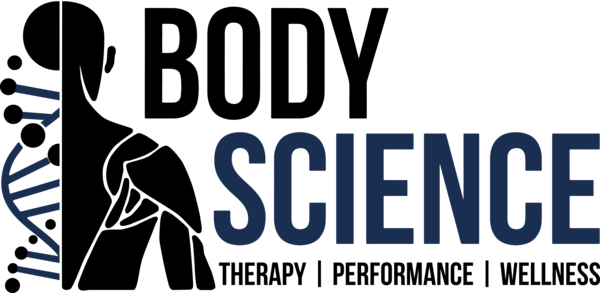
Lower back pain is one of the most common reasons people seek medical care—and one of the most misunderstood. While painkillers and rest might offer temporary relief, they often fail to address the deeper issues behind recurring discomfort. In this blog, we’ll explore how physiotherapy can help relieve chronic lower back pain by targeting the root causes, not just the symptoms. Whether your pain is new or something you’ve struggled with for years, understanding the role of physiotherapy can be the first step toward lasting recovery and better movement.
Managing Chronic Lower Back Pain: The Role of Physiotherapy
Chronic lower back pain is often caused by underlying issues that build up over time. Physiotherapy addresses these root problems through personalized treatment focused on restoring movement, reducing pain, and preventing recurrence. Physiotherapy helps by:
- Fixing Muscle Imbalances: Overactive and underused muscles can create uneven strain on the spine. Physiotherapists identify and correct these imbalances with targeted strengthening and activation exercises.
- Correcting Faulty Movement Patterns: Poor movement habits—like bending incorrectly or relying too much on the lower back—can worsen pain. Physiotherapy retrains these patterns to support safer, more efficient motion.
- Reprogramming Neurological Dysfunction: Long-term pain can disrupt communication between the brain and muscles. Techniques like Neurokinetic Therapy help restore proper control and reduce pain sensitivity.
- Improving Joint Mobility and Tissue Function: Stiff joints and tight muscles often limit movement. Manual therapy and mobility work help free up restrictions and ease discomfort.
- Strengthening Core Stability: A strong core supports the spine during daily activities. Physiotherapy focuses on activating deep stabilizing muscles to reduce load on the lower back.
- Educating for Long-Term Prevention: People learn how to protect their back through better posture, movement habits, and daily routines that promote lasting spinal health.
By addressing these key areas, physiotherapy offers an effective and lasting solution for managing chronic lower back pain.
Physiotherapy Techniques Used to Address Lower Back Pain
Physiotherapy takes a root-cause approach to lower back pain—focusing on how your body moves and functions, not just on symptom relief. Rather than just relying on passive treatments like ultrasound, TENS, or heat packs, it is important to incorporate advanced, hands-on techniques that deliver lasting results. Techniques that help people regain function and return to an active lifestyle include:
- Neurokinetic Therapy (NKT): A technique that identifies and corrects faulty movement patterns by testing how your muscles and nervous system interact. It helps retrain the body to move efficiently and reduce stress on the lower back.
- Dolphin Neurostim (MPS Therapy): This microcurrent therapy targets trigger points and nerve pathways to relieve pain and promote healing. It’s especially useful for chronic pain and nerve-related tension.
- Manual Therapy: Hands-on techniques such as joint mobilization and soft tissue release improve mobility, reduce stiffness, and address mechanical contributors to pain.
- Neurological Reprogramming: Physiotherapists focus on restoring proper brain-body coordination using movement drills that improve posture, balance, and muscle activation.
- Customized Exercise Programs: Exercises are tailored to each individual and aim to correct movement faults, strengthen key muscle groups, and build long-term back support.
Together, these techniques help restore function, reduce pain at the source, and support a return to active, pain-free living.
How Long Does It Take for Physiotherapy to Work for Lower Back Pain?
Many of our clients experience noticeable improvements within the first 1–3 visits, even after months of trying traditional physiotherapy methods with little success. Because we focus on correcting the underlying dysfunctions rather than just alleviating symptoms, our treatments often yield faster and more sustainable results. However, the exact duration varies depending on the severity of the condition, the person’s commitment to prescribed exercises, and their overall health.
In general, mild to moderate cases may respond well within a few weeks, especially when people stay consistent with their home program. More complex or chronic issues—particularly those involving nerve sensitivity or long-standing compensation patterns—may require a longer recovery timeline. Regular reassessment helps track progress and guide treatment adjustments. The key to faster recovery is a personalized approach that combines hands-on therapy, targeted exercises, and client education for long-term results.
Managing Lower Back Pain: Recommended Physiotherapy Exercises
While exercises are tailored to each individual’s specific needs, some commonly recommended movements include:
- Core Activation Exercises: Strengthening the deep core muscles to support the spine and reduce strain on the lower back. Examples include dead bug variations, pelvic tilts, and abdominal bracing drills that help engage the transverse abdominis without over-recruiting surface muscles.
- Hip Mobility Drills: Improving hip flexibility to reduce compensations that contribute to back pain. Common drills include 90/90 hip switches for rotational mobility, kneeling hip flexor stretches, and controlled leg swings to improve range of motion.
- Glute Strengthening Exercises: Activating the glutes to prevent over-reliance on the lower back muscles. Examples include glute bridges, clamshells, and single-leg Romanian deadlifts to reinforce proper hip extension mechanics.
- Neural Mobilization: Gentle movements designed to improve nerve function and reduce pain sensitivity. Techniques like sciatic nerve flossing, slump stretches, and controlled leg raises help reduce neural tension and improve mobility.
Unlike standard exercise prescriptions, our approach integrates neurological reprogramming techniques to ensure these exercises create lasting changes in movement patterns.
Signs You Need to See a Physiotherapist for Lower Back Pain
Not all back pain requires immediate treatment, but certain warning signs shouldn’t be ignored. Recognizing when to see a physiotherapist can make all the difference in preventing long-term issues and ensuring a full recovery.
- Pain Persists for More than a Few Days: If your back pain lingers beyond a few days, it could signal deeper issues like joint dysfunction or muscle imbalance. Early physiotherapy can help address the root cause before it worsens.
- Frequent Recurrence: Recurrent episodes of back pain suggest an unresolved root cause. Without proper treatment, these flare-ups can become more severe over time and may begin to limit your movement, posture, and overall activity level.
- Pain Interferes with Daily Activities: If back pain prevents you from sitting, walking, lifting, sleeping, or performing routine tasks, it’s a clear sign that your body is not functioning properly. Physiotherapy can help restore mobility and reduce pain so you can return to your normal activities safely.
- Numbness, Tingling, or Radiating Pain: These symptoms may point to nerve irritation or compression, such as sciatica, which should be assessed and managed promptly to prevent long-term damage or dysfunction.
- Stiffness or Lack of Mobility in the Lower Back or Hips: Limited range of motion can lead to compensatory movement patterns, increasing strain on the spine. Physiotherapy can address mobility restrictions and improve functional movement.
- Unbalanced Posture or Movement: Subtle shifts in posture or movement—such as leaning to one side, limping, or an inability to stand evenly—may signal muscular imbalances or nervous system involvement that physiotherapy can correct.
Additionally, if you have tried conventional treatments without success, our specialized approach may provide the relief you have been searching for. Seeking care early at Body Science Therapy can prevent minor discomfort from turning into a chronic issue.
Preventing Recurrence of Lower Back Pain
The goal of a physiotherapy treatment plan is not only to relieve your current pain but also to prevent it from returning. By identifying and correcting the root cause, retraining movement patterns, and strengthening key muscle groups, we equip our clients with the tools needed for long-term back health. We also educate our clients on posture, ergonomics, and lifestyle adjustments to minimize future risk.
This prevention-focused approach is essential for breaking the cycle of recurring back pain. Once symptoms have improved, the next phase of care typically involves progressing exercises to build resilience and integrating functional movements into daily routines. Clients may be guided through activities like proper lifting techniques, core engagement during routine tasks, and even breathing strategies to reduce unnecessary spinal load.
In addition, understanding environmental and behavioural triggers—such as prolonged sitting, poorly adjusted workstations, or sleep positioning—plays a key role in minimizing future flare-ups. Our goal is to empower people with awareness and self-management skills so they can take control of their spinal health and avoid re-injury over time.
Addressing Lower Back Pain: Physiotherapy vs. Medication
While medications can temporarily relieve pain, they do not address the underlying dysfunctions causing the pain. Physiotherapy, particularly the root-cause approach we use at Body Science Therapy, offers a long-term solution by correcting imbalances, restoring function, and reprogramming neurological patterns. By treating the problem at its source, physiotherapy not only reduces pain but also improves overall movement and quality of life without the side effects of medication.
Medications such as muscle relaxants may help reduce inflammation or provide short-term relief, but they often mask the symptoms rather than resolve them. As a result, individuals may return to activity too soon, unaware that their body is still compensating or dysfunctional—leading to a cycle of pain recurrence.
In contrast, physiotherapy provides a more proactive and personalized path to healing. It includes in-depth assessment, hands-on treatment, and progressive rehabilitation, all of which are tailored to the individual’s unique needs and goals. Moreover, physiotherapy avoids the risk of dependency or side effects often associated with prolonged medication use. By promoting natural movement, improved strength, and nervous system regulation, it supports lasting recovery from within.
Experience the Difference at Body Science Therapy
If you’re struggling with lower back pain and looking for real, lasting relief, visit Body Science Therapy in Mississauga. Our evidence-based, hands-on approach ensures that you receive personalized care that targets the root cause of your pain. Unlike traditional physiotherapy clinics, you will not be left alone on passive machines—we prioritize active, effective treatments that yield transformative results. Book an appointment today and take the first step toward a pain-free, healthier future.
